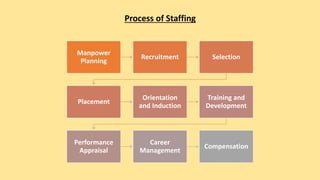Letting Loose the Power of Information: Enhancing Human Resources Strategies With Cutting-Edge Staffing Management Software
By using the power of data analytics, companies can not just enhance their employment methods but additionally enhance employee retention and efficiency. The synergy between data-driven understandings and advanced modern technology provides an engaging chance for HR specialists to transform their approach in the direction of talent monitoring.
Significance of Data-Driven Human Resources Techniques
Why have data-driven HR methods become essential in contemporary business operations? In today's busy and competitive company setting, organizations are significantly depending on data-driven understandings to make enlightened decisions. Data-driven human resources approaches allow companies to enhance their labor force management, recruitment procedures, and staff member engagement efforts. By assessing data associated to staff member efficiency, turnover rates, and ability voids, HR departments can determine patterns, forecast future needs, and develop positive options to resolve challenges.
Data-driven HR techniques likewise play a vital duty in improving worker contentment and retention. Via the evaluation of worker responses, performance reviews, and training outcomes, HR specialists can customize private development strategies, identify high-potential workers, and cultivate a society of continuous learning and development within the company. Data-driven understandings allow HR groups to align their approaches with the total company objectives, making certain that skill management initiatives directly add to organizational success.
Benefits of Staffing Administration Software
Using staffing management software program improves the employment and onboarding processes for human resources departments, boosting effectiveness and precision in skill procurement. One considerable advantage of this software application is the ability to systematize candidate information, making it easily available for employment teams. By having all candidate information in one location, human resources professionals can successfully track candidate development, connect efficiently with possible hires, and guarantee a smooth employment experience.
Furthermore, staffing administration software often consists of features such as resume analyzing and keyword matching, which assist in promptly identifying top prospects that match the work requirements. This automation decreases the moment invested in manual resume evaluating, permitting HR staff to focus on even more critical jobs. staffing management software. Additionally, these systems can integrate with work boards and social media sites systems, expanding the reach of job postings and drawing in a diverse pool of prospects
Moreover, analytics and reporting tools within staffing management software program give valuable understandings right into employment metrics, such as time-to-fill and cost-per-hire. This data-driven approach enables HR groups to make enlightened choices, maximize employment approaches, and boost total working with processes. By leveraging these advantages, organizations can streamline their talent acquisition efforts, enhance prospect experience, and inevitably construct a solid workforce.
Enhancing Recruitment Processes With Information
By leveraging data, companies can make even more informed choices throughout the recruitment lifecycle, ultimately leading to far better hires and enhanced retention rates. One crucial way information improves employment processes is by enhancing task postings based on insights from previous successful hires.
Moreover, information analytics can simplify the screening and option procedure by identifying patterns in candidate certifications and efficiency indications. This allows recruiters to focus their initiatives on candidates who are probably to be successful in the function, conserving time and resources. Furthermore, data-driven recruitment techniques can help in reducing prejudice in the working with Extra resources procedure by offering unbiased insights into candidate qualifications and potential fit within the company. Generally, integrating data into employment procedures encourages organizations to make smarter hiring choices and build high-performing teams.
Improving Employee Retention Through Modern Technology

One way innovation can improve worker retention is with making use of worker interaction platforms. These platforms enable real-time feedback, acknowledgment, and interaction in between workers and administration, promoting a culture of gratitude and support. In addition, modern technology can make it possible for individualized discovering and advancement programs tailored to specific staff member requirements and profession aspirations, increasing work fulfillment and loyalty.
Furthermore, information analytics devices can help companies determine trends and patterns associated with worker turn over, allowing them to take proactive browse around this site actions to attend to potential concerns before they rise. Generally, by leveraging innovation effectively, companies can create an extra engaging and encouraging workplace that motivates staff members to grow and remain within the company.
Taking Full Advantage Of Labor Force Efficiency With Information

With the analysis of information, HR departments can recognize patterns and trends that influence performance levels. For example, by tracking worker job hours and task completion rates, organizations can enhance job timetables to ensure that tasks are effectively distributed amongst employee. Furthermore, data can expose skill gaps within the workforce, allowing HR to execute targeted training programs that enhance employee capabilities and overall productivity.
Furthermore, data-driven performance evaluations enable supervisors to give details responses and assistance to workers, fostering a culture of continuous renovation. On the whole, leveraging information to make the most of workforce performance is a calculated technique that equips organizations to attain their objectives efficiently and efficiently.
Conclusion
Finally, using advanced staffing management software program can dramatically improve HR strategies by leveraging the power of information. By incorporating data-driven employment procedures, improving staff member retention with technology, and making the most of labor force efficiency, organizations can enhance their operations, make even more educated decisions, and eventually achieve higher success in handling their human funding. Embracing these technical advancements is critical in the ever-evolving landscape of human resource administration.
Data-driven HR approaches allow business to optimize their labor force management, employment procedures, and worker engagement initiatives. By examining information associated to worker efficiency, turnover rates, and skill spaces, Human resources divisions can identify trends, anticipate future demands, and create redirected here proactive services to attend to obstacles.
